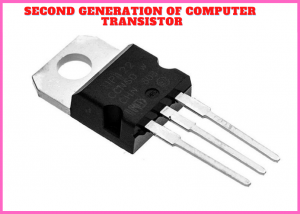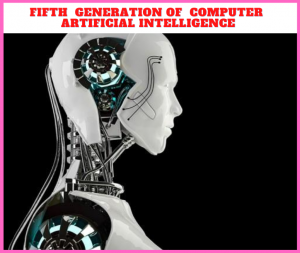Computer generations
What is computer generation?
A computer is a machine manipulating data or information electronically. It can store, retrieve, and analyze the information. A computer can now be used to follow instructions, send email messages, play online games, and browse the internet. Editing or making spreadsheets, reports, and sometimes even videos can also be used. Yet the development of this complex structure began approximately 1940 with the very first Computer Generation and has since evolved. The computer revolution is always marked as a technological breakthrough that has fundamentally altered the unique way for computers work, culminating in ever smaller, cheaper, increasingly efficient, and much more efficient machines. Reference is often made to the development of computer technology in relation to the various types of computing devices. Computer revolution completely changed the way computers function, resulting in ever smaller, cheaper, more efficient, and much more secure computers.
The first computer generation:
Vacuum tubes were used in the first generations of computers. These computer systems made use of vacuum tubes as storage circuits and electromagnetic drums. As just a consequence they were very massive, taking up practically whole rooms and costing a lot to maintain. Those were all ineffective materials that provided a lot of temperatures, pulled enormous energy, and ultimately produced a lot of the heat that caused continuous failures. These machines of the first century focused on ‘machine language’ (that is the most simple programming language which computers use to communicate). Information was dependent on the paper tape and punches cards. Performance appeared on publish-outs. The generation’s two significant devices were the UNIVAC and ENIAC computer.

Figure: 1 Vacuum tube
The second generation of computers:
A transistor computer also referred to as a second-gen computer, is a computer that uses single transistors rather than vacuum tubes. … By 1947, the transistor’s invention drastically changed the production of computers. In television sets, phones, and computers the transistor supplemented the obsolete vacuum tube. As a consequence, computer equipment has now shrunk in scale. In 1956 the transistor had been at work on the device. Together with early developments in magnetic-core memory, transistors contributed to lighter, cheaper, more stable, and much more energy-efficient second-gen computers than their counterparts. The initial supercomputers expanded by IBM and LARC by Sperry-Rand were the very first large-scale devices to take full advantage of this transistor technique. Both built for atomic power research labs, these computers were able to manage huge amounts of data, which by atomic researchers was a skill in much availability. The computers were costly and many were too efficient for the computing wants of the business community, thereby reducing their appeal. Only two LARCs have ever been constructed; one from the Lawrence Radiation Labs in Livermore, California, going to name just after the device, and another in the United States.

Figure: 2. Transistor
The third generation of computers:
Computers of the third generation were machines that increased prevalence to the invention of the integrated circuit (IC). As we recognize them nowadays they were the very first move towards computers. Their key innovation was the use of integrated circuits, which made it possible to slim them down to be as lightweight as big toasters. Despite this, they acquired the title microcomputers because they’re very small in comparison to computers of the 2nd gen that would fill entire floors and houses. Much-known machines in this period also include the DEC PDP range and the IBM-360 series of computers. Computers quickly became much more accessible, and then developers and found it interesting have become more popular, contributing to more advances in the area of computer programming and also hardware. It was around this period that several high-level programming languages, including such C, Pascal, COBOL, and FORTRAN, began public sphere use. In this period, magnetic storage has become more common too.

Figure: 3. Integrated circuit
The fourth generation of computers:
The fourth-generation time frame was from 1971-80. The (VLSI) large scale built-in circuits are used on this gene’s computers. Such circuits have 5000 transistors as well as other components of the circuit. The computers of the fourth-generation are becoming more powerful, compact, reliable, and affordable. There are many numerous additional tools including such time-sharing, real-time networking, fourth-generation decentralized os was used. This generation uses all the high-level languages including Java, C, C++, PHP. Such machines can also be used for incorporation in the LSI (a massive scale). The fourth generation is the third generation expansion. First-generation computers covered the entire room area, but new computers will fit in the hand. This generation of computers uses microprocessor chips. In the fourth generation of computers, object-oriented programming has been used. There are different kinds of language in object-oriented programming, including Java, Visual Basic, etc. These object-oriented applications are intended to solve particular issues and need no advanced training sessions. It includes queries and substations of applications. The first business that can build the microchips was the Intel. IBM produced the first Fourth Generation home computer. Such machines had to operate a minimal amount of energy. The Computer’s fourth-generation had the first supercomputer that could reliably conduct several calculations. Such supercomputers have been used in telecommunications as well. The ability for processing expanded to many gigabytes, and even terabytes of data.

Figure: 4. Micro processor
The fifth generation of computers:
The Fifth Generation project is a major Japanese research study which aims to produce a new form of the computer by 1991. It was initially launched after much discussion about the need for considerably more accessible computers that would proliferate “like air” across in order to take advantage of the aging population and personal development among many other things. The MITI people who funded the plan must’ve had a strong marketing strategist to select the project ‘s address because it’s very title has generated a lot of excitement around the world. Computers of the 5th generation will be in the stage of development, focused on artificial intelligence. The fifth generation’s aim is to create a computer that is smart enough to learn and self-organization and can react to real language input. For this research, Quantum computing and Quantum and Nanotechnology would be used. Therefore we may assume that machines of the fifth century should have the strength of human intelligence.

Figure: 5. Artificial intelligence